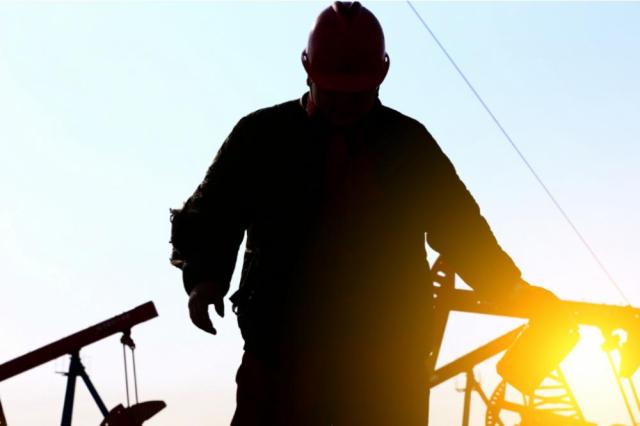
One of the biggest problems facing the growth of CCS is the lack of relevant legislation and regulation, according to a report by Wood Mackenzie. (Source: Shutterstock.com)
As the world confronts a climate emergency, oil and gas businesses are facing escalating pressure from policymakers who are undergoing scrutiny to deliver promises made as part of the historic Paris Agreement. Although the concept of carbon capture and storage (CCS) has been around for decades, halfway through the year, it is emerging as a critical tool for upstream companies to decarbonize operations, according to a recent study by consultancy firm Wood Mackenzie.
2021 has been a landmark year for CCS, moving from the fringes to the main stage. Three of the largest gas projects approved this year—Australia’s Barossa gas project, Qatar’s North Field East and Ghasha in UAE—are all associated with CCS plans to capture or offset it.
In addition, almost all major oil and gas companies have announced plans to use sequestration to reach their decarbonization targets. In April, Exxon Mobil proposed a public-private carbon storage project that would collect planet-warming CO₂ emissions from U.S. petrochemical plants and bury them in deep under the Gulf of Mexico.
Other oil majors including Occidental Petroleum, Shell and Equinor have also implemented CCUS technologies to different degrees.
However, despite mainstream deployment of carbon capture, significant hurdles remain. According to Wood Mackenzie’s report, the oil and gas industry has “barely managed to put a dent in the problem.”
“We believe the regulatory, commercial and technical hurdles still to be overcome are significantly underestimated,” Angus Rodger, research director of Asia-Pacific at Wood Mackenzie, said in the report. “Discussions with both existing and aspirational CCS operators convey a clear message: hitting targets will be very challenging.”
He continued, “In 2019, the world emitted around 33 gigatonnes of CO2, but current CCS projects are capturing just 40 million tonnes of CO2 annually. If we are to hit global decarbonization goals, this will have to rise to at least 7,000 Mt CO2 per year by 2050. That’s a huge challenge.”
Facilitation of CCS projects takes two key forms—CCS regulation and government funding, which means CCS projects require government policy and support to proceed.
However, most countries lack the requisite legal and fiscal legislation framework on sequestration, licensing, carbon accreditation, incentives and ultimate liability for leakage risk, which is slowing down CCS initiatives in countries such as Indonesia, Russia and Australia, Rodger said.
Rodger said collaboration is key for CCS projects, adding that for most ambitious companies, it can help provide material solutions to Scope 1, 2 and 3 emissions.
“The industry can’t do it alone, however, and company targets will not be met if the right carbon pricing, credits, incentives, legislation and regulation are not in place.”
Discussing the future of CCS, Rodger said, “The future direction of carbon pricing will be crucial. Every company looking at CCS is wrestling with the commercial piece of the puzzle. The scale and uncertainty of the costs is significant. And with so few projects developed in recent years, benchmarks are few and far between.”
He continued, “For the time being, then, CSS remains a cost, but as carbon prices rise, that will change. Early movers may gain a valuable strategic advantage, but it won’t be easy.”
Recommended Reading
Sempra Targets Summer 2025 for Commercial Start of ECA LNG Phase 1
2024-03-06 - Sempra is targeting the summer of 2025 as the commercial operations date for its 3.25 mtpa (0.43 Bcf/d) nameplate capacity Energía Costa Azul LNG Phase 1 project, located in Ensenada in Baja California, Mexico.
API Gulf Coast Head Touts Global Emissions Benefits of US LNG
2024-04-01 - The U.S. and Louisiana have the ability to change global emissions through the export of LNG, although new applications have been frozen by the Biden administration.
Heard from the Field: US Needs More Gas Storage
2024-03-21 - The current gas working capacity fits a 60 Bcf/d market — but today, the market exceeds 100 Bcf/d, gas executives said at CERAWeek by S&P Global.
ConocoPhillips CEO Ryan Lance Calls LNG Pause ‘Shortsighted’
2024-02-14 - ConocoPhillips chairman and CEO Ryan Lance called U.S. President Joe Biden’s recent decision to pause new applications for the export of American LNG “shortsighted in the short-term.”
Exclusive: Chevron Balancing Low Carbon Intensity, Global Oil, Gas Needs
2024-03-28 - Colin Parfitt, president of midstream at Chevron, discusses how the company continues to grow its traditional oil and gas business while focusing on growing its new energies production, in this Hart Energy Exclusive interview.





